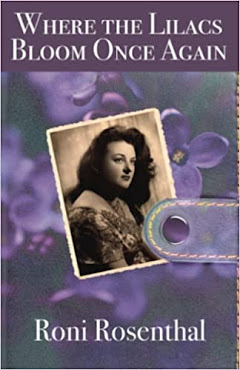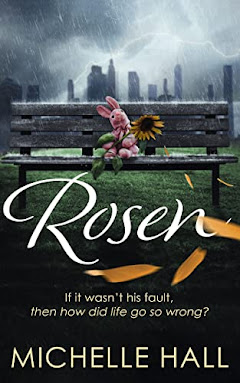There are simple techniques you can use to improve your business book that has nothing to do with magic or intrigue. Use these tricks to motivate, engross, and inspire your readers.
You know that magical feeling you get when you’re reading a book you can’t put down? The words draw you in and you’re lost in the pages.
As you settle down to write your own book, you want your readers to have that same sensation, right? Excited, absorbed, and so engaged they’ll recommend your book to everyone they meet.
But here’s the problem – you’re a business person, not an author. You can churn out blog posts when you need to, but crafting a whole book so it flows like a dream and persuades your readers to take action is something you’re struggling with.
It’s not surprising. The only long-form writing most of us have done was our assigned essays at school so many years ago – and one big difference between those essays and your book is that your teacher had to read them. No one has to read your book, and that can trigger your doubts.
What if your readers don’t fully understand your advice and ideas? How in the world can you tell if they’re going to like your book? These sorts of nagging questions might make you give up before you begin. But what if I were to tell you there are a few simple tricks to writing a page-turner that has nothing to do with magic, intrigue, or being the next Malcolm Gladwell?
Use these techniques to help improve your business book so that it motivates, engrosses, and inspires your readers.
Write hot, edit cold
Don’t try to write the perfect draft the first time through. Start by getting your words down on the page and don’t worry about gripping your readers with your prose. Don’t concern yourself with making it a good read; it’s just a read right now, and that’s OK.
Writing a draft uses a different part of your brain than editing does, which means it’s tiring and unproductive to continuously refine what you’ve written. Save the editing for some time after you’ve completed your first draft. You have permission to squash your inner critic for now.
Plan your outline
If you were to take an aerial view of your chapters, spread out in order, what would you see? Would it be a logical series of landmarks progressing and relating in a harmonious way, like a river leading to the sea, or would it be a mix of disconnected elements that don’t relate?
The order in which your points appear forms the outline of your book and the number one reason why some business books don’t make a convincing case is that the outline doesn’t work. Readers won’t get the point, and neither will a commissioning editor at a publishing house.
Put yourself in the place of your ideal reader. What does she know? What doesn’t she know? What’s her starting point? Plan your outline points with this reader in mind and ease her through your thinking, building your case and keeping her turning the pages as she learns more and more about your topic.
Flow like a slinky
Remember the slinky toy you had when you were a kid? The one that crawled down stairs, each step building the energy required to leap to the next one? I would play with mine for hours – it seemed magical (or maybe I was just odd). Your sentences and paragraphs need to flow like that slinky. Here’s what I mean:
Non-slinky flow: Dogs are simple creatures and their needs are few. They socialize with other dogs and require feeding twice a day.
Slinky flow: Simple creatures with few needs, dogs are happy to socialize with most other animals, especially other dogs, and only require feeding twice a day.
Think about what you write and how it will relate to what will come after it. Do they have a relationship? If so, make it clear. If not, reconsider why you’ve put them next to each other.
Don’t abandon your reader
Is the business book you’re writing a how-to guide? If it is, it’s a good idea to address your reader directly. Many writers make the mistake of phrasing their words in a theoretical way, which comes across as academic and impractical. Here’s an example:
Theoretical: Strategy is an essential tool in business: it drives every decision.
Convincing: Strategy is the most essential element in your tool kit: you’ll be using it to drive every business decision you make.
The first sentence is rather cold; the second helps your reader understand how the information relates to him.
Even if your book isn’t a how-to guide, similar thinking applies. You still want your readers to think differently after reading it, and you’ll be more effective if you speak to them naturally and directly. There’s no need to do this in every sentence, but you need to regularly address your readers or they will start to feel like they’re being left out of the party.
Be yourself
Your readers want to feel like they are a part of your world, and they can only get to know you and feel an emotional connection with your words if you show a bit of who you really are. The easiest way to get your reader to fall in love with you is to be yourself.
To be clear, I’m not suggesting you write as though you were chatting at a café with your girlfriend when she, like, started to lol… Business books, by their nature, do demand an element of formality and they certainly require a lot of care with the writing. But let’s look at the difference between these two sentences:
Overly formal: I attended a meeting in order to discuss my opinion with the committee chair. I was not given much time, but I expressed my views forcefully.
Formal, with character: I shared my ideas with the committee chair at the meeting. Unfortunately, I didn’t get to spend much time with him, but I made my opinion on the matter abundantly clear.
Again, the first is cold, the second gives you a little more insight into the personalities involved.
Once you’ve written the first draft of your book, circle back and have a look at it with these points in mind. You’ve done the hard part by getting your thoughts down on paper – now take the time to make them shine.
Source: Bookbaby




















































.jpg)
































































No comments:
Post a Comment